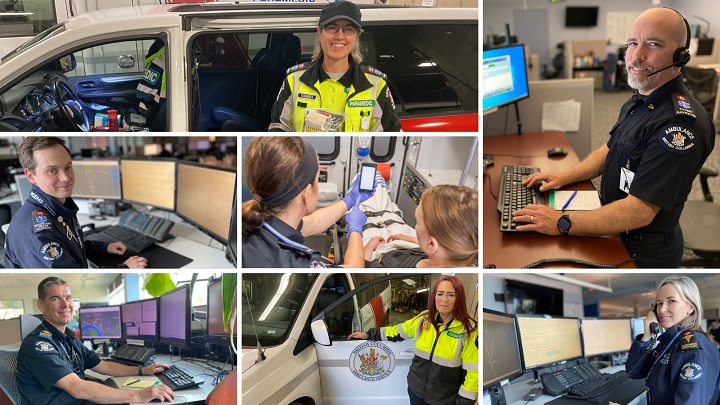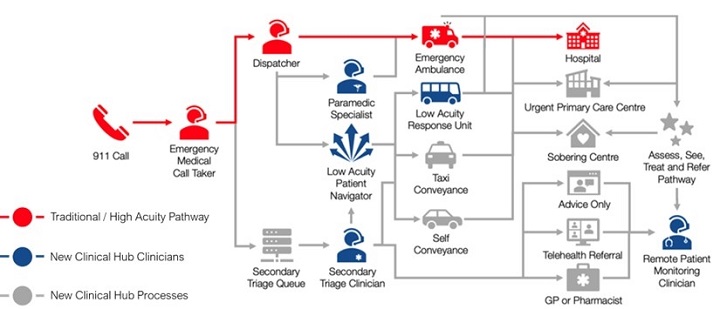The Clinical Hub team at BC Emergency Health Services (BCEHS) has been awarded the Paramedic Chiefs of Canada Award of Excellence for an Innovative Treatment or Technology, a peer-selected award that recognizes extraordinary achievement of an innovated initiative within the last three years.
Established in January 2022 in response to the increasing number of non-life-threatening emergency calls, the Clinical Hub focuses on providing alternate assessment, conveyance, and care alternatives for patients who may not need transport to hospital. This helps ensure that BCEHS ambulances are available for the most critically ill and injured patients, while low acuity patients get the right care for their needs, instead of facing long wait times in dispatch queues and emergency rooms.
Currently, about 50 per cent of 9-1-1 calls for a BCEHS ambulance are for non-life-threatening emergencies, such as cuts, wounds, sprains, muscle strains, mild illness or skin conditions, accounting for approximately 350,000 calls per year.
The Clinical Hub includes Secondary Triage Clinicians, Low Acuity Patient navigators, Low Acuity Response Units, Paramedic Specialists and EPOS Physicians, who deliver treatment to patients via telehealth as well as leverage technological innovations, such as GoodSAM instant video, to ensure low acuity patients receive the right care the first time they contact 9-1-1. Their suite of initiatives is a first in Canada, and they continue to innovate.

“This team has dared to be innovative. Each team member deserves praise for taking a risk and thinking beyond the norm to achieve great advances for our organization and our patients,” says Jade Munro, Director, Clinical Hub Operations.
The team also participates in research and develops and oversees innovative care models such as virtual health, and care options for patients with non-urgent and at times, urgent, needs to ensure best practice across the organization.
In March, the team used the GoodSam app to assess a newborn baby delivered with the assistance of a BCEHS emergency call-taker in Altona, a remote community in northern B.C. It was the first time any ambulance service in Canada used the GoodSam app in a pre-hospital labour and delivery. Two days later, the virtual tool was used again to assist with a baby’s delivery in the Port Hardy area of B.C.
“I am inspired by the level of dedication and quality of the care delivered by this team,” says Dr. Mike Christian, Chief Medical Officer, BCEHS. “The team is recognized within the organization for their positive culture and willingness to go above and beyond to help their colleagues and our patients.”
“Across the province, the work that the team is leading has received positive feedback from our health authority partners and is, in fact, in many cases driving positive system change not only in the out-of hospital arena but also within health authority institutions,” he says.

In its first year of operation, the Clinical Hub showed strong results in patient care experiences with 43 per cent of patients assessed through secondary triage able to self-transport or use alternate care pathways to be connected to care, versus using traditional emergency ambulance resources prior to the roll-out of the Clinical Hub.
In addition,
Low Acuity Response Units (LARUs) were able to attend more than 16,000 patient events within the same time frame. LARUs can provide care alternatives including arranging transport to an urgent primary care centre (UPCC), enrolling patients in an “Assess, See, Treat and Refer” (ASTAR) clinical pathway, or otherwise assisting the patient with care on-site. More than half of patients attended by LARUs – 53 per cent – were also treated on-scene without the need for transport to hospital.

